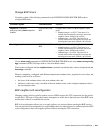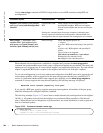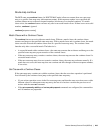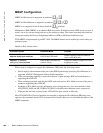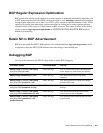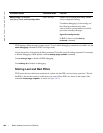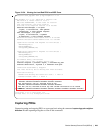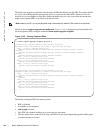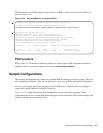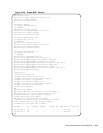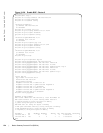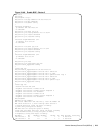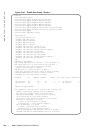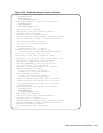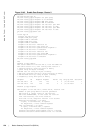
Border Gateway Protocol IPv4 (BGPv4) | 271
With full internet feed (205K) captured, approximately 11.8MB is required to store all of the PDUs, as
shown in Figure 10-36.
Figure 10-36. Required Memory for Captured PDUs
PDU Counters
FTOS version 7.5.1.0 introduces additional counters for various types of PDUs sent and received from
neighbors. These are seen in the output of the command
show ip bgp neighbor.
Sample Configurations
The following configurations are examples for enabling BGP and setting up some peer groups. These are
not comprehensive directions. They are intended to give you a some guidance with typical configurations.
You can copy and paste from these examples to your CLI. Be sure you make the necessary changes to
support your own IP Addresses, Interfaces, Names, etc.
Figure 10-37 is a graphic illustration of the configurations shown on the following pages. These
configurations show how to create BGP areas using physical and virtual links. They include setting up the
interfaces and peers groups with each other.
FTOS(conf-router_bgp)#do show capture bgp-pdu neighbor 172.30.1.250
Incoming packet capture enabled for BGP neighbor 172.30.1.250
Available buffer size 29165743, 192991 packet(s) captured using 11794257 bytes
[. . .]
FTOS(conf-router_bgp)#do sho ip bg s
BGP router identifier 172.30.1.56, local AS number 65056
BGP table version is 313511, main routing table version 313511
207896 network entrie(s) and 207896 paths using 42364576 bytes of memory
59913 BGP path attribute entrie(s) using 2875872 bytes of memory
59910 BGP AS-PATH entrie(s) using 2679698 bytes of memory
3 BGP community entrie(s) using 81 bytes of memory
Neighbor AS MsgRcvd MsgSent TblVer InQ OutQ Up/Down State/Pfx
1.1.1.2 2 17 18966 0 0 0 00:08:19 Active
172.30.1.250 18508 243295 25 313511 0 0 00:12:46 207896



